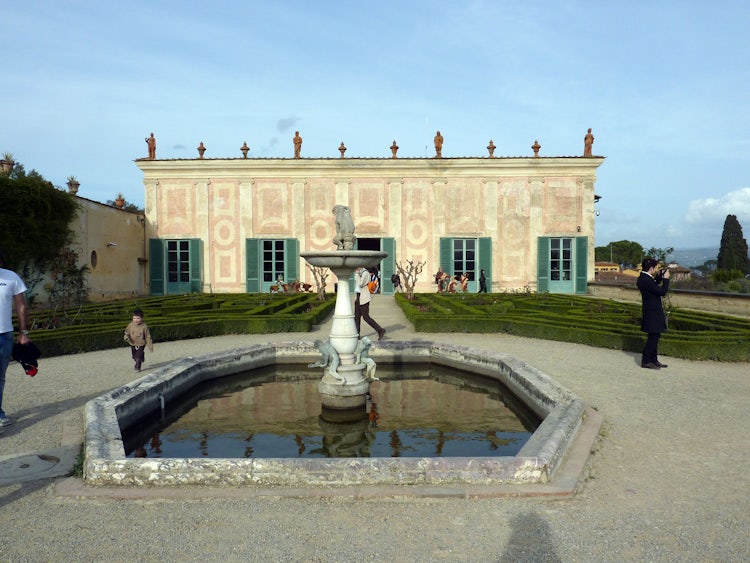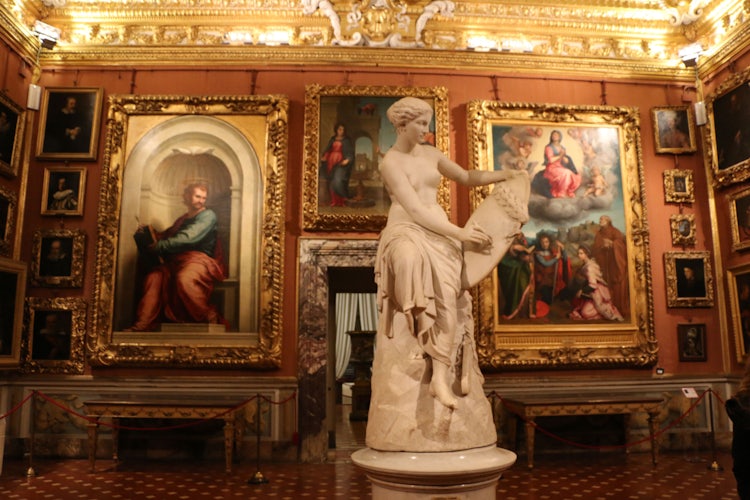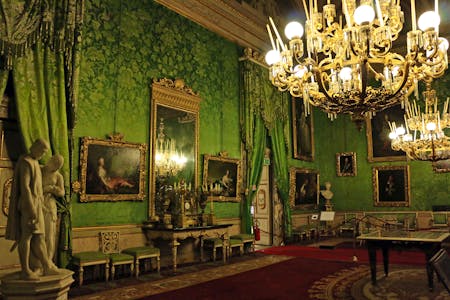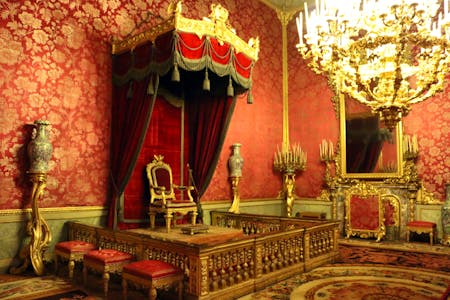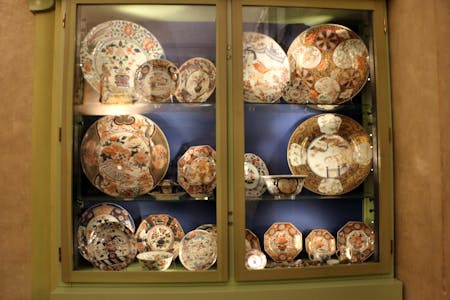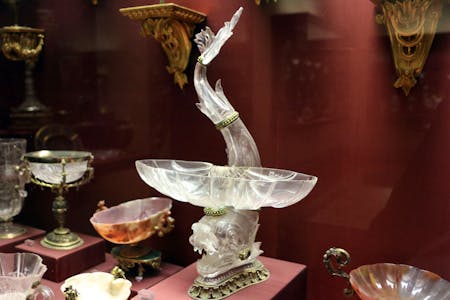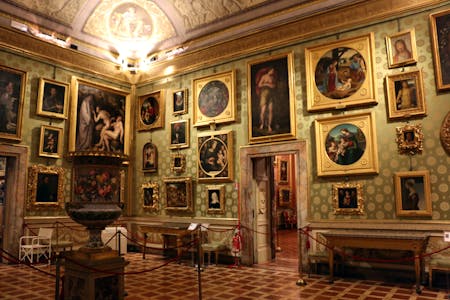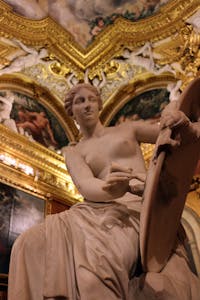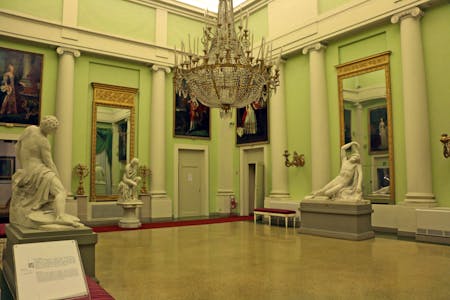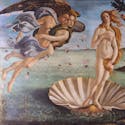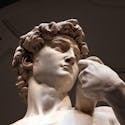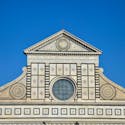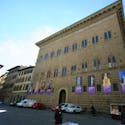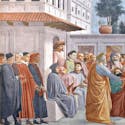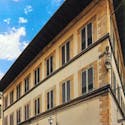This enormous palace is one of Florence's largest architectural monuments. The original palazzo was built for the Pitti family in 1457, designed by Filippo Brunelleschi and built by his pupil Luca Fancelli. The original construction consisted of only the middle cube of the present building (the middle seven windows on the top floor). In 1549, the property was sold to the Medicis and became the primary residence of the grand ducal family. The palace was then enlarged and altered; from 1560, Bartolomeo Ammannati designed and added the grandiose courtyard and two lateral wings.
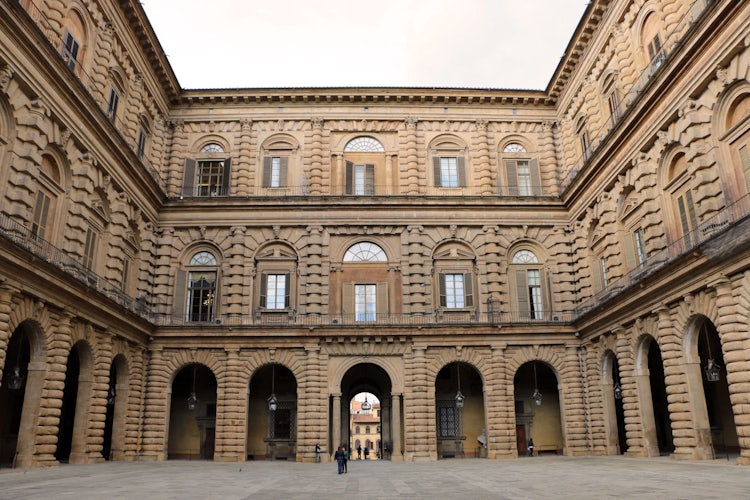
Hours and Admission
Check the box on the right → for opening hours and admission cost to better plan your visit to the Pitti Palace!
Under Cosimo II de' Medici, the layout of the piazza and opening up of the view were begun. The facade then assumed its present appearance, except for the two projecting wings, added by the House of Lorraine in the early 18th century. Behind the palace lie the famous Boboli Gardens.
Today, the Pitti Palace houses some of the most important museums in Florence: on the first floor is the Palatine Gallery, containing a broad collection 16th and 17th century paintings (including works by Raphael), and the Royal Apartments, containing furnishings from a remodeling done in the 19th century.
Guided Tour of Palazzo Pitti
The art collection in the Palatine Gallery is enormous! Visiting in the company of a tour guide is a good idea if you want to focus on the highlights. This 2 hour guided tour does just that, taking you to see the main works in the Palatine Gallery and Royal Apartments.
Check out Splendors of the Royal Residence for more details.
On the ground floor and mezzanine is the Treasury of the Grand Dukes (formerly known as the the Silver Museum or Museo degli Argenti) displaying a vast collection of Medici household treasures, from table silverware to precious stone vases, rock crystals and precious jewelry.
The Gallery of Modern Art is on the top floor, holding a collection of mostly Tuscan 19th and 20th century paintings.
In the separate Palazzina del Cavaliere on the upper slopes of the Boboli Gardens is the Porcelain Museum, while the Palazzina of the Meridiana contains the Museum of Costume and Fashion (formerly just called the Costume Gallery), a showcase of the fashions of the past 300 years.
The Pitti Palace museums have finally created a single ticket and made opening times the same for all museums to simplify the life and itineraries of all visitors! :) Entrance to the Boboli Gardens, the Porcelain Museum and Bardini Gardens remains as a separate ticket. More details on these last at the end of this article.
The Palatine Gallery and Royal Apartments
The Palatine Gallery occupies the whole left wing of the first floor of the Pitti Palace, which was the residence of the Medici Grand Dukes. In 1828, when Tuscany came under the rule of the Lorraine family, the most important paintings in the Palace were hung in the Gallery and opened it was opened to the public. It is an impressive collection comprising works by Raphael, Titian, Correggio, Rubens, Pietro da Cortona and other Italian and European masters of the Renaissance and Baroque periods. Continue reading about the Palatine Gallery and the Royal Apartments here.
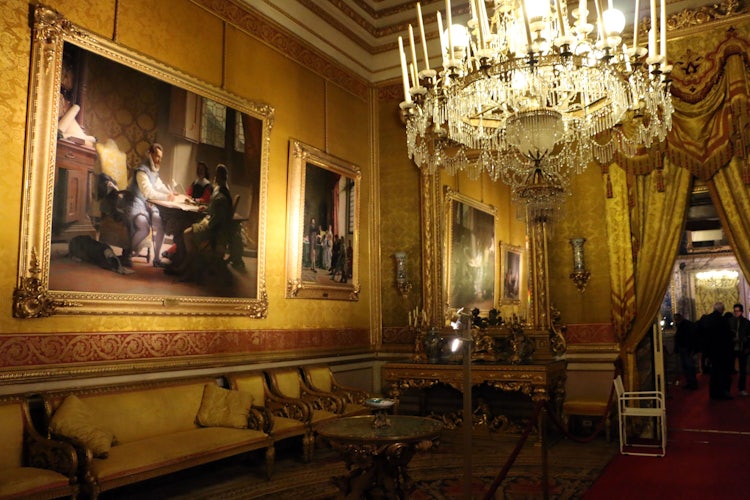
The Gallery of Modern Art
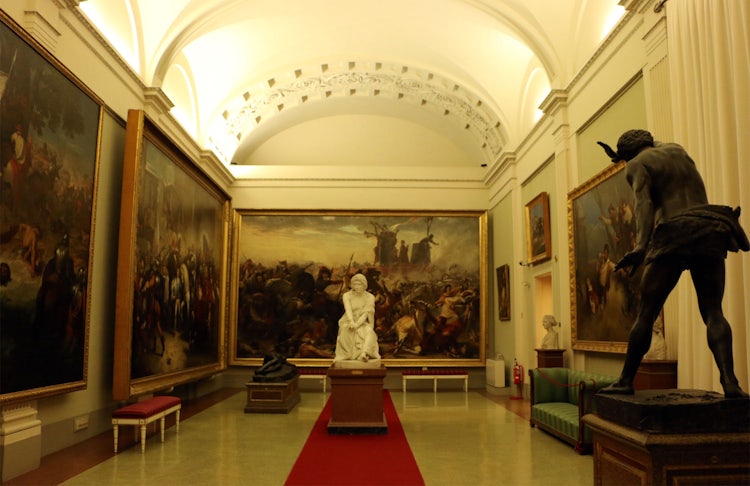
The Gallery of Modern Art, located on the second floor of the Pitti Palace, has a fine collection of paintings and sculpture, mostly Italian, dating from the late 18th century to World War I. The elegant rooms, which were inhabited by the Lorraine grand dukes, are decorated with works of the neo-classical and romantic periods. There is also a splendid collection of works by artists of the Macchiaioli movement and of other Italian schools of the later 19th and early 20th centuries.

The Treasury of the Grand Dukes (formerly the "Museo degli Argenti" or Silver Museum)
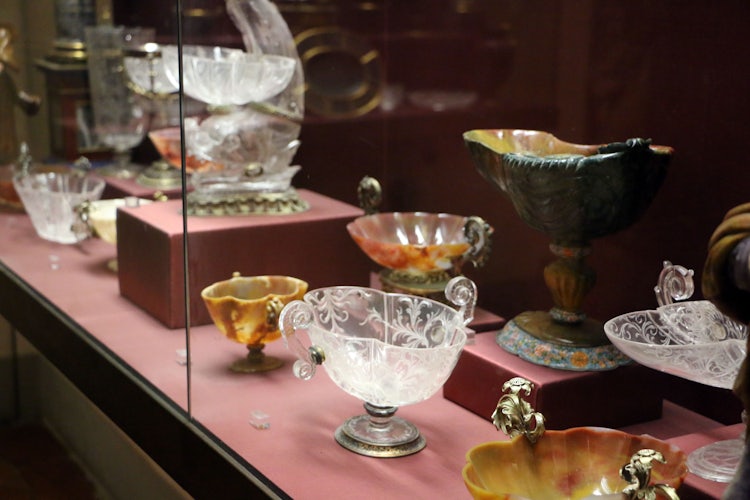
The Museum houses an extraordinarily rich collection of precious objects, many of which were commissioned by members of the Medici family. The works of art range from Florentine workmanship to other schools and countries and include rock crystal vases and works in pietre dure (semi-precious stones), ivory, gems, ambers, silver, cameos, carpets, clocks and chinoiserie. The silverware comes from the "Salzburg Treasure", collections that belonged to the Bishops of Salzburg and which made their way to Florence through the Grand Duke Ferdinand III of the Habsburg-Lorraines. The museum also includes a remarkable collection of jewels from the 17th to 20th century, including contemporary jewelry.
Guided Tour of Palazzo Pitti, Boboli & Oltrarno
If you'd love a visit of the main works in the Palatine Gallery and Royal Apartments, plus the Boboli Gardens and a bit of the Oltrarno neighborhood, check out this family-friendly tour of Palazzo Pitti and the Boboli Gardens for more details.
The Museum is situated in the left wing of the Pitti Palace on the ground floor and in the first mezzanine. The state rooms, which formed part of the grand-ducal summer apartment, are decorated with important 17th-century frescoes by Giovanni da San Giovanni where the theme is the evocation through mythology of Medici history at the time of Lorenzo the Magnificent.
The Museum of Costume and Fashion (formerly Costume Gallery)
The Museum of Costume and Fashion occupies the 18th century Palazzina della Meridiana, along the southern back wing of the Pitti Palace overlooking the Boboli Gardens. It was the first Italian state museum of the history of fashion in Italy and is one of the most important in the world. The collection comprises 6,000 items including costumes dating from the 18th to the 20th centuries, famous costumes worn in important movies and in theatrical works, accessories and an extremely rare exhibit of 16th century garments worn by Grand Duke Cosimo I de' Medici, his wife Eleanor of Toledo and their young son Garcia. A selection of the collections is exhibited on rotation which is replaced every three years but there are also frequent special temporary exhibitions devoted to particular aspects of the collection.
The Boboli Gardens
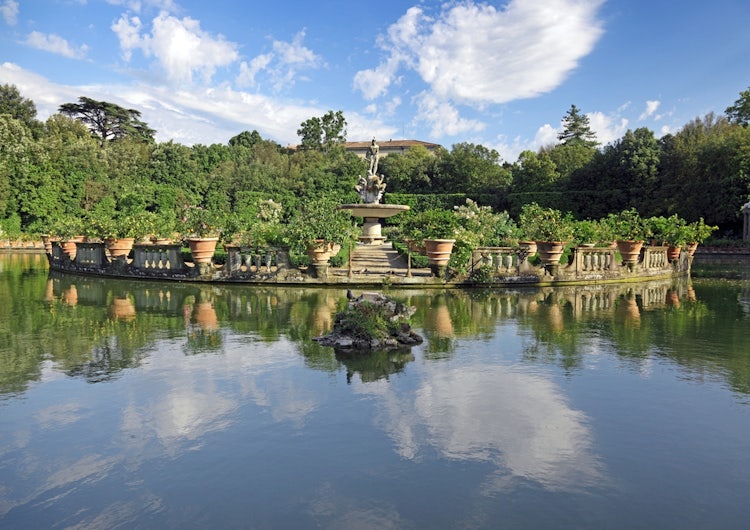
These gardens comprise the largest monumental green area in Florence. Their history goes back over four centuries, for Cosimo I commissioned the designs from Niccolo Pericoli, known as Tribolo, in 1549. Work was continued by Ammannati, Buontalenti and Parigi the Younger. Noteworthy places are: Buontalenti's Grotto (1583), the Amphitheather with the Roman basin and the Egyptian obelisk at the center, Neptune's Fishpond, the statue of Plenty by Giambologna and Tacca (1563), the Grand Duke's Casino, the Cavalier's Garden, Parigi's Fountain of the Ocean.
Read the article dedicated to the Boboli gardens for more details and photographs.
The Porcelain Museum
The Porcelain Museum was a section of the Silver Museum and was situated in the mezzanine of the Pitti Palace until 1973 when the collection was transferred to the Casino del Cavaliere at the top of the Boboli gardens' slopes. Built in the 18th century as a retreat for the Grand Duke, the Casino has proved a particularly ideal setting for the conservation and display of this collection.
The collection consists mainly of table porcelain used by the Grand Ducal and Royal Houses of the Medici, Lorraine and Savoy. The collection can be described as princely, in that many pieces were made for the grand ducal court or were gifts from other European rulers. The grand dukes made use of the local Florentine manufactory of Doccia for their large services in daily use, which are well represented in the museum.
